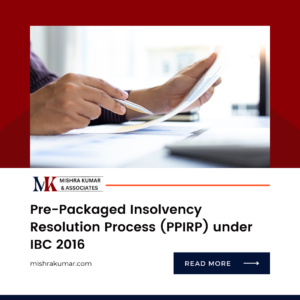Unveiling the World of IND AS Valuations in India
In the ever-evolving landscape of financial reporting and accounting, adherence to International Financial Reporting Standards (IFRS) has become increasingly vital for businesses globally. In India, the convergence of IFRS with Indian Accounting Standards (IND AS) has brought about significant changes in financial reporting, including the adoption of fair value measurements and IND AS valuations.
This comprehensive guide is designed to provide insights into the realm of IND AS Valuations in India. It explores their significance, the intricate analysis process, and the broader implications for businesses and financial professionals. Whether you’re a finance expert, a business owner, or a stakeholder, understanding IND AS valuations is paramount in the context of contemporary financial reporting.
INTRODUCTION
In the ever-evolving landscape of financial reporting and accounting, adherence to International Financial Reporting Standards (IFRS) has become increasingly vital for businesses globally. In India, the convergence of IFRS with Indian Accounting Standards (IND AS) has brought about significant changes in financial reporting, including the adoption of fair value measurements and IND AS valuations.
This comprehensive guide is designed to provide insights into the realm of IND AS Valuations in India. It explores their significance, the intricate analysis process, and the broader implications for businesses and financial professionals. Whether you’re a finance expert, a business owner, or a stakeholder, understanding IND AS valuations is paramount in the context of contemporary financial reporting.
ANALYSIS
2.1 The Role of IND AS Valuations in Financial Reporting
Under the IND AS framework, fair value measurements and valuations hold a central role in financial reporting. Fair value, as defined by IND AS, is the price that would be received to sell an asset or paid to transfer a liability in an orderly transaction between market participants at the measurement date. This definition emphasizes the market-oriented approach that IND AS Valuations adopt.
IND AS Valuations play a multifaceted role in financial reporting:
Measurement Basis: IND AS prescribes the fair value measurement basis for various financial assets and liabilities, including investment properties, financial instruments, and biological assets. As a result, companies must regularly assess the fair value of these items and incorporate these values into their financial statements.
Impairment Testing: IND AS mandates regular impairment testing for assets such as goodwill, non-financial assets, and financial assets measured at amortized cost. Valuations help in determining whether an asset’s carrying amount exceeds its recoverable amount, necessitating impairment recognition.
Business Combinations: When a business combination occurs, IND AS requires that the acquirer measures the identifiable assets and liabilities at their fair values. Valuations are crucial in determining the acquisition cost and the recognition of goodwill or gain from a bargain purchase.
Derivatives and Hedge Accounting: IND AS allows for hedge accounting, which relies heavily on the fair value of financial instruments. Valuations ensure that derivative contracts are appropriately measured, ensuring that changes in fair value are accounted for accurately.
2.2 Valuation Methods and Challenges
IND AS Valuations must adhere to the principles of fair value, emphasizing the importance of market-based measurements. The standard provides a structured framework for determining fair value, which includes:
Market Approach: This approach relies on observable market prices and inputs, making it the preferred method when market prices are available. It includes methods such as quoted market prices and prices for similar assets or liabilities in active markets.
Income Approach: The income approach involves discounting future cash flows to determine the present value of an asset or liability. It is commonly used when market-based inputs are not available or reliable.
Cost Approach: The cost approach calculates fair value by determining the cost to replace an asset. This method is typically employed for assets with limited or no market activity.
Challenges in IND AS Valuations include the availability and reliability of market-based inputs, determining appropriate discount rates, and considering factors such as liquidity and credit risk adjustments. Valuation specialists must exercise professional judgment to overcome these challenges and arrive at reliable valuations.
2.3 Implications for Financial Reporting Transparency
IND AS Valuations significantly impact financial reporting transparency. By mandating fair value measurements, IND AS ensures that the financial statements provide a more accurate representation of a company’s financial health. This, in turn, enhances the transparency of financial reporting and increases the quality of financial information available to investors, stakeholders, and regulatory authorities.
Accurate IND AS Valuations enable companies to:
- Provide investors with a more complete picture of their financial position and performance.
- Enhance credibility and confidence in financial reporting, both domestically and internationally.
- Improve risk management by identifying potential impairment and other issues.
- Facilitate mergers, acquisitions, and investment decisions by providing reliable asset and liability values.
CONCLUSION
IBC Valuations are not merely a procedural formality but a critical component of India’s insolvency resolution ecosystem. They ensure transparency, fairness, and adherence to legal and regulatory requirements. Accurate valuations are key to promoting investor confidence, facilitating the resolution of distressed companies, and enhancing the efficiency of the insolvency process.
As India continues to refine and expand its insolvency framework, the significance of IBC Valuations will only grow. Stakeholders, professionals, and businesses must recognize their importance and engage qualified valuers to navigate the intricate world of insolvency with precision and confidence.
FAQs
Q1: What is the significance of IND AS Valuations in financial reporting?
Ans: IND AS Valuations are vital for ensuring that financial statements accurately reflect the fair value of assets and liabilities, aligning businesses with international accounting standards and enhancing transparency in financial reporting.
Q2: Which assets and liabilities are subject to fair value measurements under IND AS?
Ans: Assets and liabilities that are subject to fair value measurements include investment properties, financial instruments, biological assets, goodwill, non-financial assets, and derivative contracts.
Q3: What are the key methods employed for IND AS Valuations?
Ans: The three primary methods used for IND AS Valuations are the Market Approach, Income Approach, and Cost Approach. The choice of method depends on the availability of market-based inputs and the nature of the asset or liability being valued.
Q4: What challenges do valuation specialists face when conducting IND AS Valuations?
Ans: Challenges include the availability and reliability of market-based inputs, determining appropriate discount rates, and considering factors such as liquidity and credit risk adjustments. Valuation specialists must exercise professional judgment to overcome these challenges.
Q5: How often should assets and liabilities be revalued under IND AS?
Ans: The frequency of revaluation depends on the specific asset or liability and its nature. For example, investment properties should be revalued at least once a year, while other assets and liabilities may be revalued when there are indications of impairment or significant changes in fair value.
Q6: Can IND AS Valuations impact a company’s financial statements?
Ans: Yes, IND AS Valuations have a direct impact on a company’s financial statements, affecting the balance sheet and income statement. Accurate valuations ensure that the financial statements provide a true and fair view of the company’s financial position and performance.
Q7: What are the implications of IND AS Valuations for investors and stakeholders?
Ans: IND AS Valuations provide investors and stakeholders with a more comprehensive and reliable picture of a company’s financial health. They enhance confidence in financial reporting and aid in making informed investment and strategic decisions.
Q8: Can businesses choose to not implement IND AS Valuations? Ans: No, IND AS Valuations are mandatory for certain categories of entities as per the Companies (Indian Accounting Standards) Rules, 2015. Businesses must adhere to these standards to maintain compliance and transparency in financial reporting.
Q9: Where can businesses and financial professionals find guidance on IND AS Valuations? Ans: Guidance on IND AS Valuations can be obtained from the Institute of Chartered Accountants of India (ICAI) and the Ministry of Corporate Affairs (MCA) websites, as well as through specialized training and consultation with valuation experts.
Q10: Are there specific reporting requirements associated with IND AS Valuations? Ans: Yes, businesses are required to properly document and report IND AS Valuations as per the guidelines specified by the Indian Accounting Standards. Accurate reporting is essential to ensure transparency and compliance in financial reporting.
RECENT POSTS
- The implication of Stamp Duty on Scheme of Arrangement (Merger & Amalgamation):
- Pre-Packaged Insolvency Resolution Process (PPIRP) under IBC 2016
- BUY BACK OF SHARES V/S DIVIDEND
- Comprehensive comparative analysis of SEBI (Listing Obligations and Disclosure Requirements) (Second Amendment) Regulations, 2021.
- SEBI (Delisting of Equity Shares) Regulations, 2021-Imposes new responsibilities on the board of directors.

The implication of Stamp Duty on Scheme of Arrangement (Merger & Amalgamation):
The implication of Stamp Duty on Scheme of Arrangement (Merger & Amalgamation): The Scheme of Arrangement is a legal mechanism under corporate law that allows

Pre-Packaged Insolvency Resolution Process (PPIRP) under IBC 2016
Pre-Packaged Insolvency Resolution Process (PPIRP) under IBC 2016 The Insolvency and Bankruptcy Code (IBC) 2016, is a comprehensive legislation aimed at consolidating and amending laws

BUY BACK OF SHARES V/S DIVIDEND
BUY-BACK OF SHARES V/S DIVIDEND A dividend offers cash rewards to all shareholders in accordance with their stake in the company, whereas a share buyback

Comprehensive comparative analysis of SEBI (Listing Obligations and Disclosure Requirements) (Second Amendment) Regulations, 2021.
Comprehensive comparative analysis of SEBI (Listing Obligations and Disclosure Requirements) (Second Amendment) Regulations, 2021. Securities and Exchange Board of India (“SEBI”) vide notification dated May

SEBI (Delisting of Equity Shares) Regulations, 2021-Imposes new responsibilities on the board of directors.
SEBI (Delisting of Equity Shares) Regulations, 2021-Imposes new responsibilities on the board of directors. Securities and Exchange Board of India (“SEBI”) vide notification dated 10th

Summary of Insolvency and Bankruptcy Board of India (Liquidation Process) (Amendment) Regulations, 2024
Summary of Insolvency and Bankruptcy Board of India (Liquidation Process) (Amendment) Regulations, 2024 The Insolvency and Bankruptcy Board of India (IBBI) recently issued amendments to

